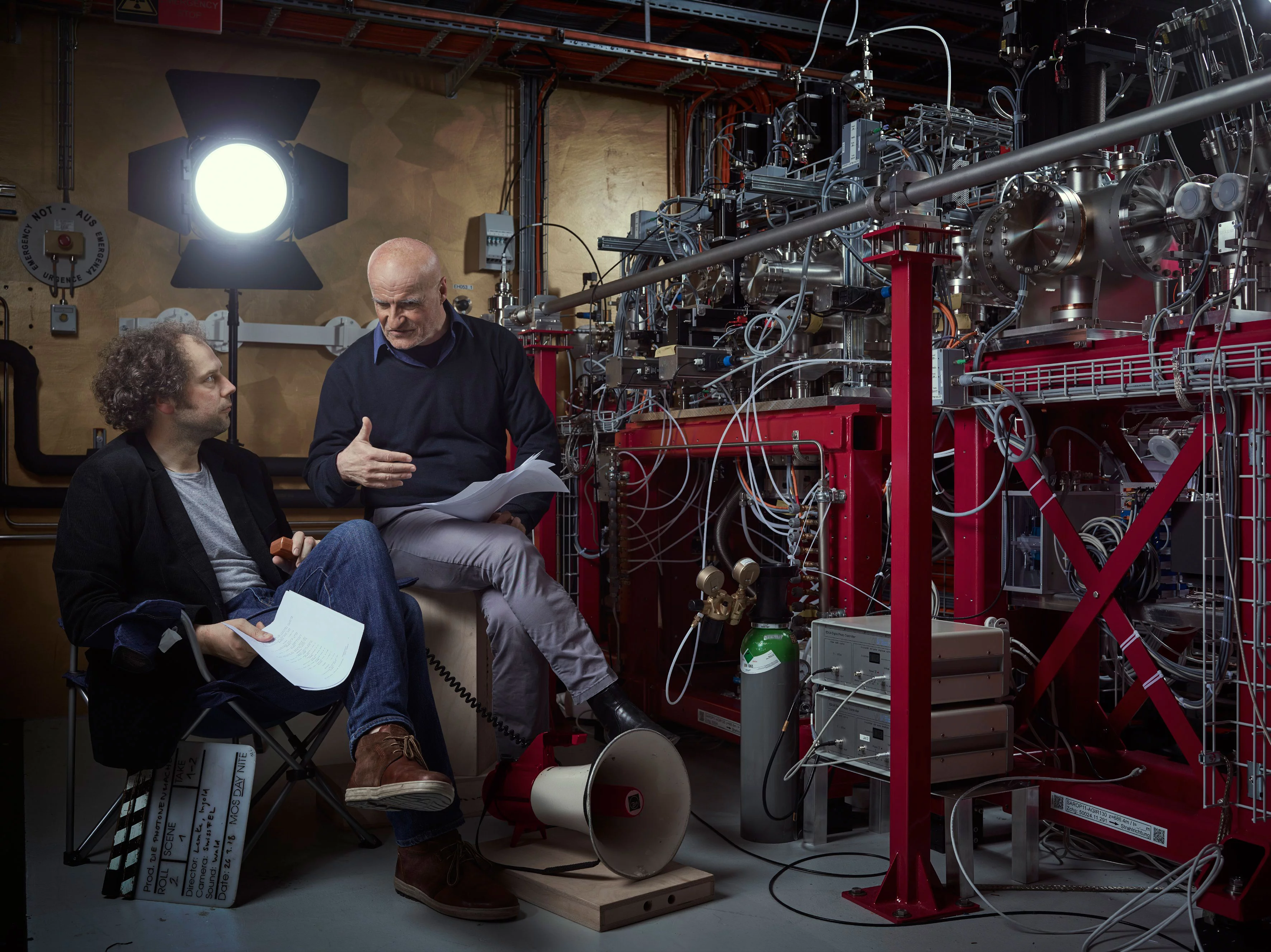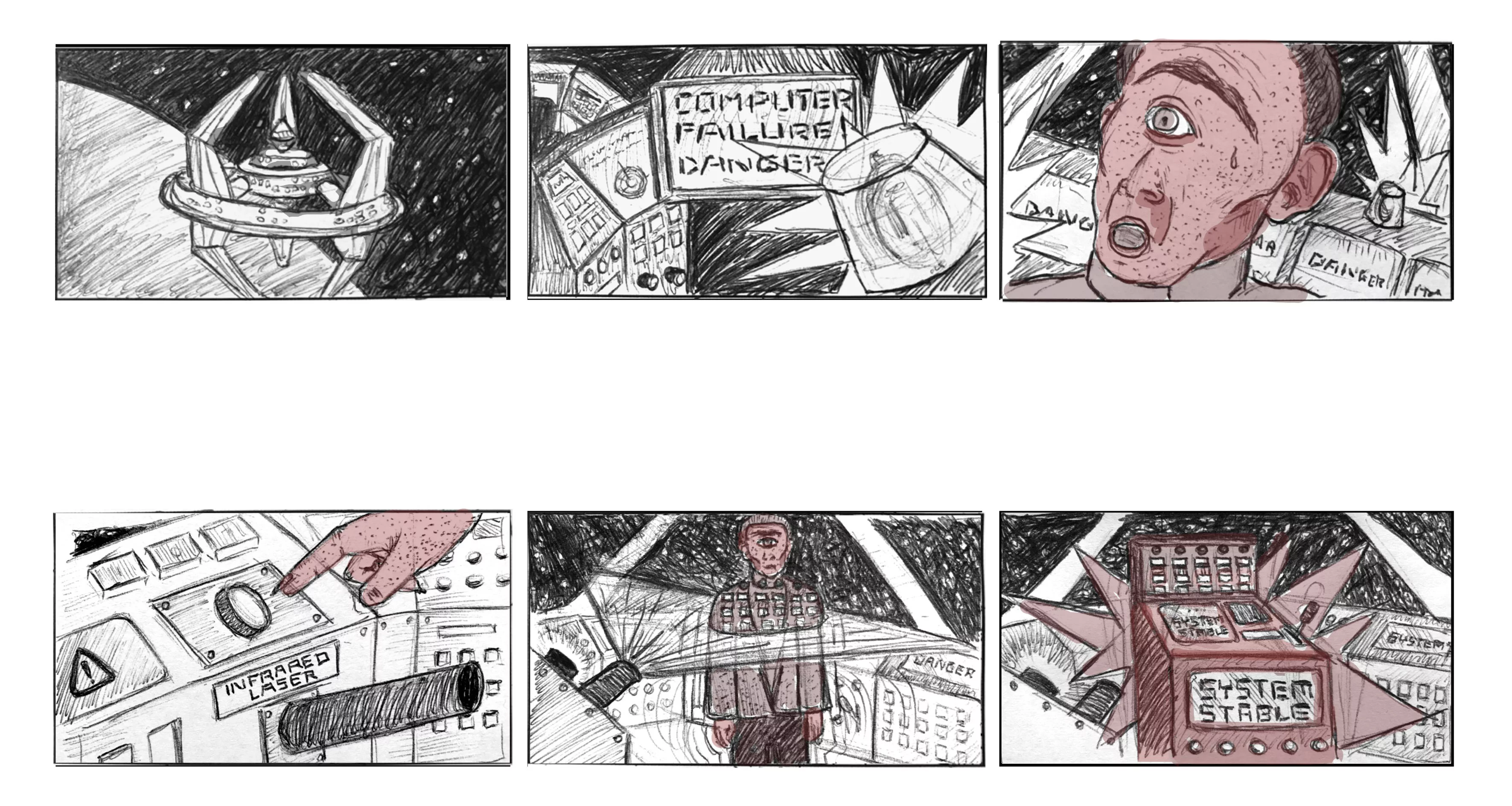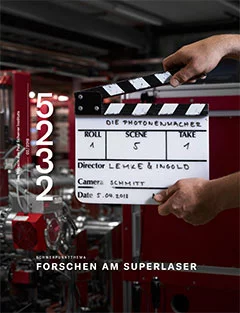Data storage devices based on novel materials are expected to make it possible to record information in a smaller space, at higher speed, and with greater energy efficiency than ever before. Movies shot with the X-ray laser show what happens inside potential new storage media, as well as how the processes by which the material switches between two states can be optimised.
Henrik Lemke comes to work on his bicycle. Private cars are not allowed to drive to the SwissFEL building in the Würenlingen forest, and delivery vans and lorries need a permit. As a beamline scientist, the physicist is responsible for the experiment station named for Switzerland's Bernina Pass. At the end of 2017, he led the first experiment at the Swiss free-electron X-ray laser, acting in effect as a movie director while SwissFEL was used, like a high-speed camera, to record how a material was selectively converted from a semiconducting to a conducting state – and back again. To this end the PSI team, together with a research group from the University of Rennes in France, studied a powder of nanocrystals made of titanium pentoxide. The sample was illuminated with infrared laser pulses that made the substance change its properties. Then X-ray pulses revealed how the crystal structure was deformed and enlarged – a cascade of dynamic processes that evidently depend on the size of the crystals. Since the effect is reversible in nanoparticles of the material, this is regarded as a promising candidate for especially efficient rewritable data storage devices.
The researchers worked in shifts around the clock for a week to guarantee that the premiere would be a success. Such experiments are always a team effort
, says Gerhard Ingold, who was responsible for setting up the measurement station Bernina: But it required a director like Henrik Lemke, who has the overview, handles coordination, and makes decisions.
It is often groups from Swiss and international universities who, with support from the PSI team, conduct experiments at PSI research facilities. But we can also propose our own experiments
, says Gerhard Ingold: Then we are the screenplay writers.
But they are also, in part, film critics, adds Henrik Lemke, when we interpret the finding after the experiment and ask ourselves what it means.
Novel data storage device
With SwissFEL, we can do more than just take a look at materials; we can follow what happens when you trigger a change in them
, says Gabriel Aeppli, head of the Photon Science Division at PSI. In this way, for example, the researchers are laying the groundwork for materials from which future storage media could be manufactured. These are expected not only to be faster and more compact than today's devices, but also to produce less waste heat.
We're not shooting any purely documentary films
, Henrik Lemke sums up, but rather influencing our actors – the samples – so something moves on the atomic level that induces a switching operation.
Then it's all about finding the right angle on the process to show what is happening physically. Sometimes that is not so simple
, says the director, because we can't look into it everywhere with our camera.
Gerhard Ingold compares the result to a television series: When you've made a measurement, you ask yourself what you have learned from it and what the next step looks like.
Text: Barbara Vonarburg



